If you are experiencing pain and swelling in your feet and legs, one way to help ease your discomfort is to learn how to massage swollen feet and legs. In this article, we will discuss some expert tips that can help you reduce swelling and pain in your feet and legs. We’ll cover how to use the right massage techniques and oils, as well as which pressure points to target. By following these tips, you can help relieve your discomfort and improve your overall health.
Contents
Causes of Swollen Feet and Legs
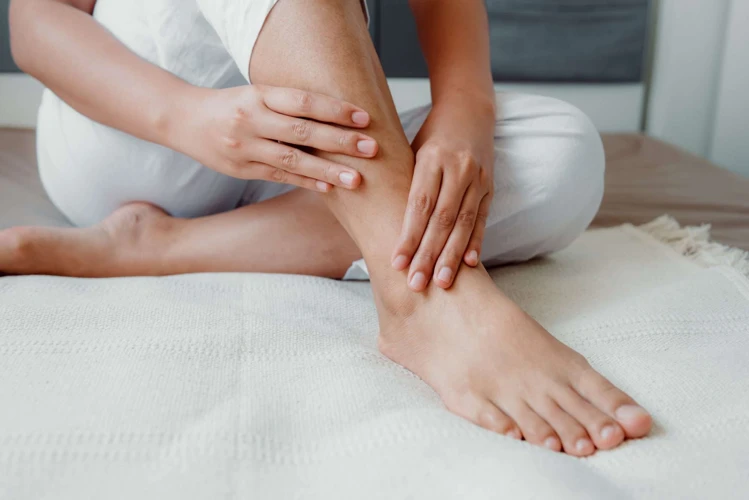
Swollen feet and legs can be caused by many things, such as standing or sitting for too long, being overweight, pregnancy, and certain medical conditions. Other causes of swelling include:
| Cause | Description |
|---|---|
| Venous Insufficiency | This condition occurs when the valves in the veins of the lower legs don’t work properly, resulting in the pooling of blood in the legs. |
| Lymphedema | This condition is caused by an abnormal buildup of lymph fluid in the legs, ankles, and feet. |
| Heart Failure | When the heart isn’t able to pump enough blood to meet the body’s needs, fluid can build up in the lower extremities. |
| Kidney Disease | Kidney issues can cause the body to retain excess fluid, resulting in swollen legs and feet. |
In some cases, the swelling may be a result of a combination of these causes.
If you are experiencing swollen feet and legs, it is important to consult with a medical professional to determine the cause and get treatment if necessary. Massage can be an effective way to reduce the swelling and pain associated with swollen feet and legs. In the next section, we will explore how to massage legs to reduce swelling.
Benefits of Massage for Swollen Feet and Legs
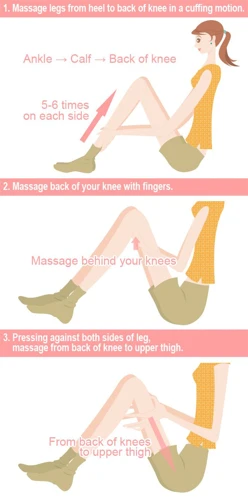
Massage is an effective way to reduce swelling and pain in the feet and legs. It helps to improve circulation, which in turn helps to reduce swelling and pain. Massaging the feet and legs can also help to stimulate the muscles, which can help to reduce stiffness and improve flexibility. Massage can also help to reduce inflammation, which can further reduce pain and swelling. Additionally, massage can help to relax the body and reduce stress, which can help to improve overall wellbeing. By massaging swollen feet and legs, it can help to reduce pain and improve mobility, allowing for a more comfortable lifestyle.
To achieve the maximum benefits of massage for swollen feet and legs, it is important to understand how to massage feet to reduce swelling. Start by applying pressure with your hands, using long strokes and circular motions to massage the affected area. You can also use heat to further reduce swelling and pain. Heat can be applied using warm towels, heating pads, or a warm compress. Massage can be done for anywhere from 5 to 30 minutes, depending on the severity of the swelling and pain. It is important to be gentle and not to apply too much pressure, as this can cause further discomfort.
Massage Techniques for Swollen Feet and Legs
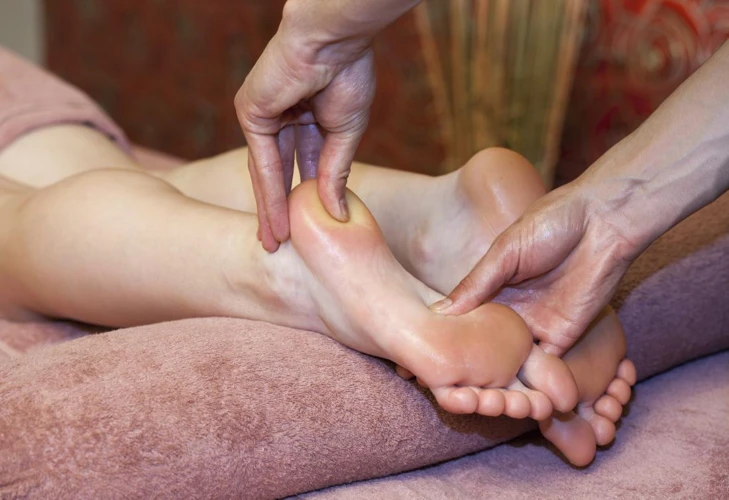
General Massage Techniques
Massage can help reduce swelling and provide relief from pain and discomfort associated with swollen feet and legs. It is important to use gentle strokes and techniques when massaging swollen areas. Avoid intense pressure as this could cause further irritation. It is also important to be aware of any areas that are particularly tender or sore, as these will require gentler massage techniques.
Massage Techniques for Swollen Feet
Begin by applying gentle pressure along the entire foot and ankle. Use circular motions with the hands to massage the area. This can help to reduce swelling and improve circulation to the area. Additionally, use kneading techniques on the toes and the arch of the foot to help reduce swelling and pain.
Massage Techniques for Swollen Legs
For swollen legs, use a combination of kneading and circular massage strokes. Start by massaging the calf muscles and move up towards the thigh. When massaging the thigh, focus on the area around the knee and use gentle strokes. It is important to avoid applying pressure directly to any areas that are particularly tender or swollen.
Massage Techniques for Edema
When massaging swollen feet and legs, it is important to be aware of any signs of edema. Edema is a condition where excess fluid is trapped in the body’s tissues, resulting in swelling. It is important to use gentle massage techniques when massaging areas of edema to avoid irritating the skin. Use light strokes and circular motions to massage the area.
Massage Techniques for Swollen Feet and Ankles
When massaging swollen feet and ankles, it is important to pay attention to the entire foot, from the toes to the heel. Use circular massage strokes to reduce swelling and improve circulation. Additionally, use kneading techniques on the toes and the arch of the foot.
Massage Techniques for a Swollen Foot
When massaging a swollen foot, use gentle strokes and a combination of kneading and circular motions. Begin by applying pressure along the entire foot and ankle. Use circular motions with the hands to massage the area. This can help to reduce swelling and improve circulation to the area. Additionally, use kneading techniques on the toes and the arch of the foot to help reduce swelling and pain. For more information on how to massage legs with edema, consult with a medical professional.
Special Considerations for Massage for Swollen Feet and Legs
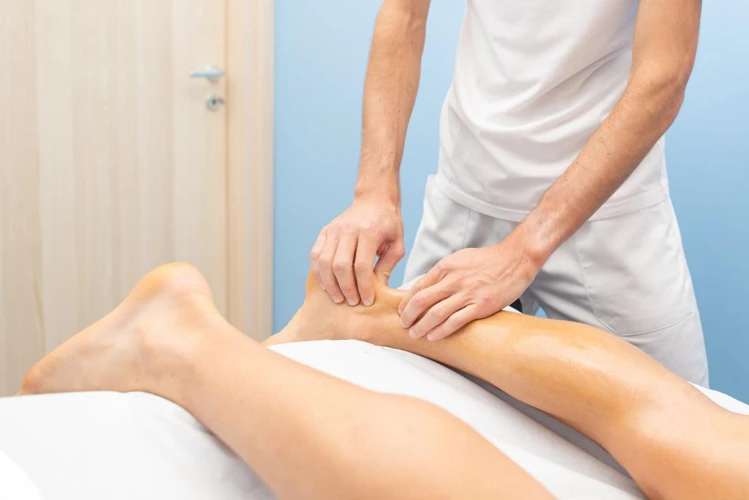
- Lymphatic drainage massage is a type of massage which can be used to help reduce swelling in the feet and legs. This massage technique is gentle and uses light strokes to help move the lymph fluid away from the swollen area and improve circulation.
- Lubrication is an important factor to consider when giving a massage for swollen feet and legs. Use a lubricant such as massage oil or lotion to reduce friction and prevent skin irritation.
- Pressure during the massage should be gentle, using light to moderate pressure. Too much pressure can worsen the swelling, whereas light pressure can help reduce the swelling.
- Duration of the massage should be no longer than 10 minutes. Massaging for too long can cause further swelling and discomfort.
- Compression can be used to help reduce swelling in the feet and legs. Compression garments, such as socks or stockings, can be used in combination with massage to help reduce swelling.
When giving a massage for swollen feet and legs, it is important to keep these special considerations in mind. By following these guidelines, you can ensure that your massage is safe and effective in helping to reduce swelling and improve circulation in the feet and legs.
Tips for Massaging Swollen Feet and Legs
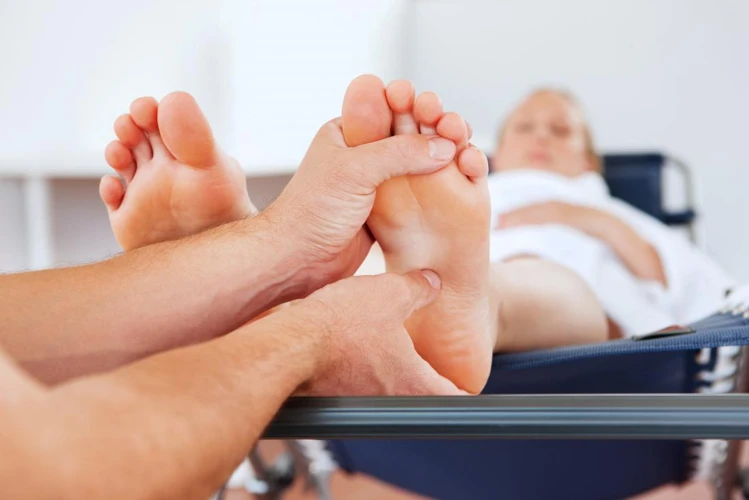
Use Gentle Pressure: When massaging swollen feet and legs, always use gentle, circular motions. Avoid using too much pressure, as this can worsen the swelling.
Use Essential Oils: Essential oils, such as lavender, eucalyptus, and peppermint, can help reduce swelling and pain. Mix a few drops of essential oil with a carrier oil, such as coconut oil, and then massage into the skin.
Avoid Hot Water: Although a hot shower or bath may seem like an effective way to reduce swelling, it can actually make the swelling worse. Instead, use lukewarm water for your showers and baths.
Cool the Skin: To reduce swelling, try using a cold compress on the affected areas. Wrap a few ice cubes in a soft cloth and apply to the area for 10 minutes at a time, a few times a day.
Move Around: When massaging swollen feet and legs, it’s important to get up and move around in between sessions. This helps to improve circulation in the legs and feet and can help reduce swelling.
Use Compression Garments: Compression garments, such as socks and stockings, can help reduce swelling. Look for garments made of breathable fabric that are designed to provide gentle compression.
Stretch: After massaging, be sure to stretch the muscles in the feet and legs. This helps to reduce tension in the muscles and can prevent further swelling.
Safety Considerations for Massaging Swollen Feet and Legs
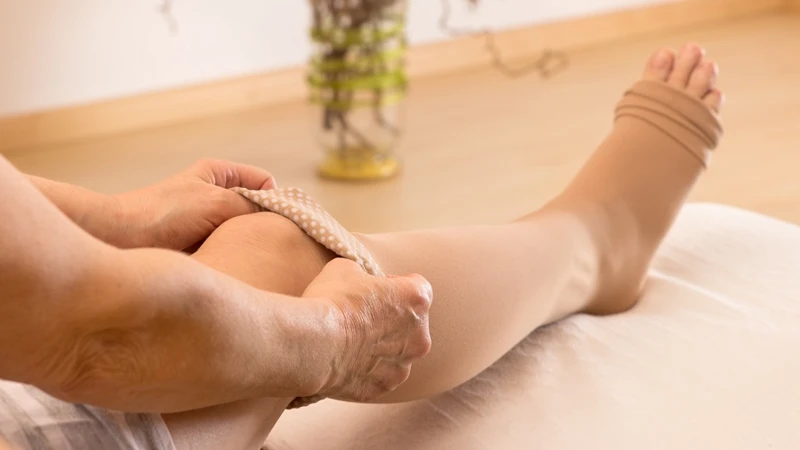
Always use gentle pressure when massaging swollen feet and legs, as too much pressure can further aggravate the swelling.
Be aware of any skin allergies and if the person has any pre-existing medical conditions that could be exacerbated by massage.
Be aware of what techniques are most suitable for the person’s condition. For example, a person with diabetes may need a gentler massage than someone without the condition.
Avoid deep massage techniques like deep tissue massage and trigger point therapy, as these may irritate the swollen area and cause further inflammation.
Be aware of the person’s pain tolerance and adjust the pressure and techniques accordingly.
Be aware of how the person is reacting to the massage. If they feel pain, stop the massage and consult with a physician.
Ensure the person is comfortable during the massage, with the right temperature, cushioning, and support.
Keep the movement gentle and don’t massage for too long, as this can aggravate the swelling.
Be aware of any risks associated with massage, such as nerve damage or bruising, and take steps to minimize these.
If the person is pregnant or has any other medical conditions, consult with a physician before performing the massage.
If the person is elderly, use extra caution and consult a doctor before performing the massage.
When to Seek Medical Help for Swollen Feet and Legs
It is important to know when to seek medical help if your feet and legs are swollen.
- If your feet and legs have been swollen for more than two weeks, and home remedies have not helped in reducing the swelling, it is best to seek medical help.
- If the swelling is accompanied by redness, warmth, or pain, it could be a sign of infection and medical attention should be sought.
- If the swelling is accompanied by a fever, abdominal pain, or shortness of breath, it could be a sign of a serious health condition and medical attention should be sought.
- If the swelling is very sudden and severe, it could be a sign of a serious health condition and medical attention should be sought.
- If the swelling is accompanied by dizziness, nausea, vomiting, or difficulty breathing, it could be a sign of a serious health condition and medical attention should be sought.
It is important to seek medical help if you are experiencing any unusual symptoms or if the swelling does not improve with home remedies.
Frequently Asked Questions
What Types of Massage Techniques Can Be Used to Relieve Swollen Feet and Legs?
Massage techniques such as effleurage, petrissage, and tapotement can be used to reduce swelling in the feet and legs. Effleurage is a light, gliding massage stroke that helps to increase circulation and decrease swelling. Petrissage is a kneading massage stroke that helps to break up adhesions and decrease swelling. Tapotement is a rhythmic tapping stroke that helps to stimulate circulation and lymphatic drainage.
How often should a massage be performed to reduce swelling?
•
-
- Swelling can be reduced within a few minutes of massage.
•
-
- Massage should be done every day until swelling is reduced to the desired amount.
•
-
- After that, massage can be done as needed to maintain the desired swelling reduction.
•
-
- In more severe cases, massage should be performed more frequently and for longer durations.
•
- Massage should also be done if swelling returns and persists.
Are there any risks associated with massaging swollen feet and legs?
Yes, there are certain risks associated with massaging swollen feet and legs:
- Applying too much pressure on the affected area can cause further swelling, inflammation, and pain.
- It can also result in excessive bruising and bleeding.
- Massaging swollen feet and legs may cause nerve damage if too much pressure is used.
- If the person has a clotting disorder or is on blood thinning medication, there is a risk of developing a blood clot.
- It can also cause skin irritation and infection.
Therefore, it is important to exercise caution when massaging swollen feet and legs, and to make sure that the pressure used is not too strong. It is also important to check with a doctor or physiotherapist before starting a massage, to make sure it is safe to do so.
Are there any health conditions that would prevent a person from receiving a massage on their swollen feet and legs?
Yes. Certain health conditions may prevent a person from receiving a massage on their swollen feet and legs. These include:
- Infections, including athlete’s foot and other bacterial or fungal infections
- Certain skin conditions, such as eczema, psoriasis, and other rashes
- Diabetes
- Deep vein thrombosis
- Blood clotting disorders
- Cancer
- Recent surgery
- Open wounds
If you have any of these conditions, it is important to consult with your healthcare provider before receiving a massage on your swollen feet and legs.
Are there any special precautions that should be taken when massaging a person with swollen feet and legs?
When massaging a person with swollen feet and legs, it is important to be gentle, as swollen areas can be particularly sensitive. A light massage with a mild oil or cream is recommended. Avoid deep tissue massages and pressure points, as these can worsen the swelling. It is advisable to use circular motions and to move slowly, avoiding massage strokes that cause pain or discomfort. Additionally, it is important to keep the area elevated while massaging to reduce swelling.
Conclusion
Massaging swollen feet and legs can be an effective way to reduce swelling and pain. By incorporating techniques such as kneading, light tapping, and rotating movements, you can increase circulation, reduce inflammation, and ease discomfort. However, if the swelling persists, it is important to seek medical advice.

